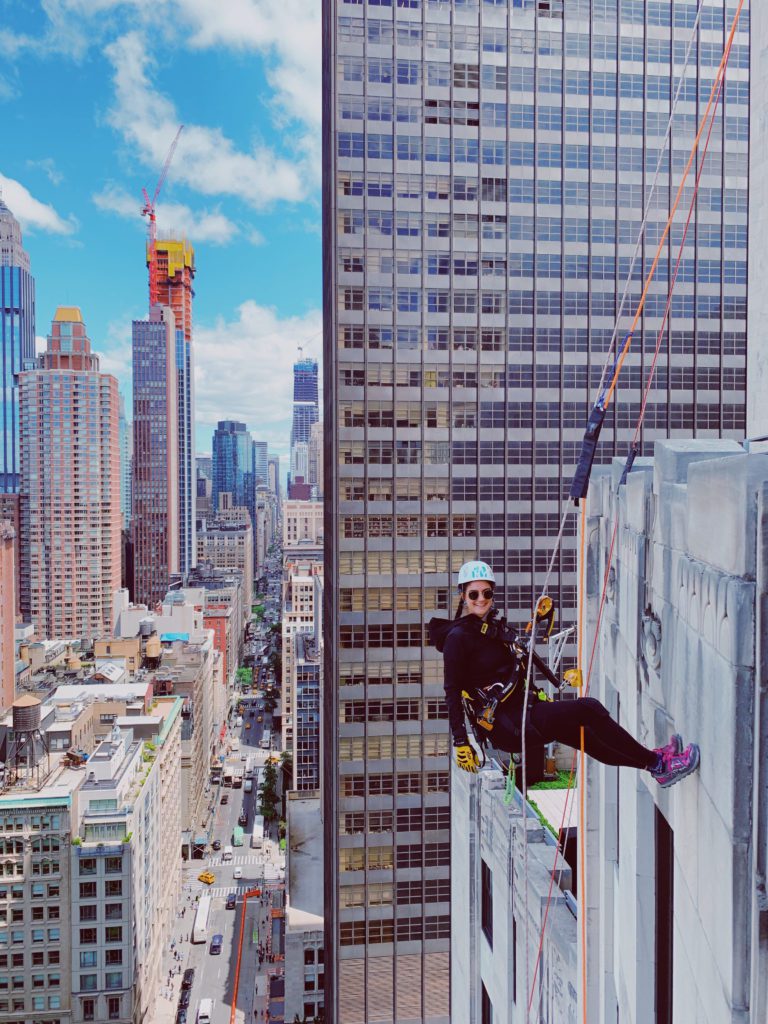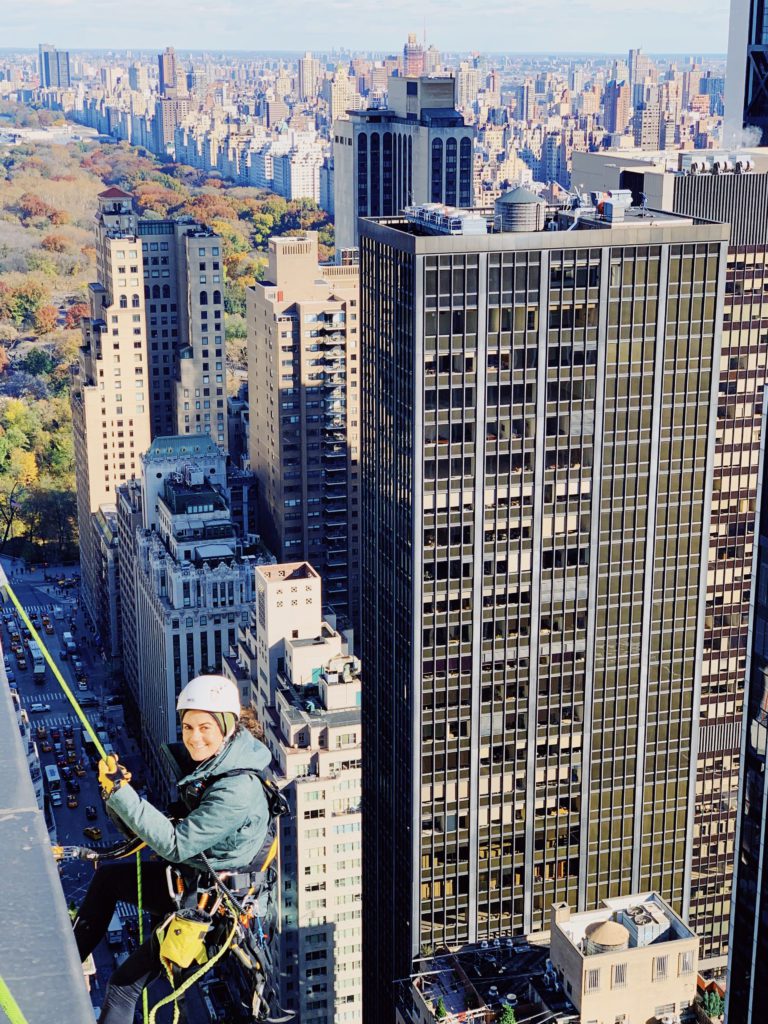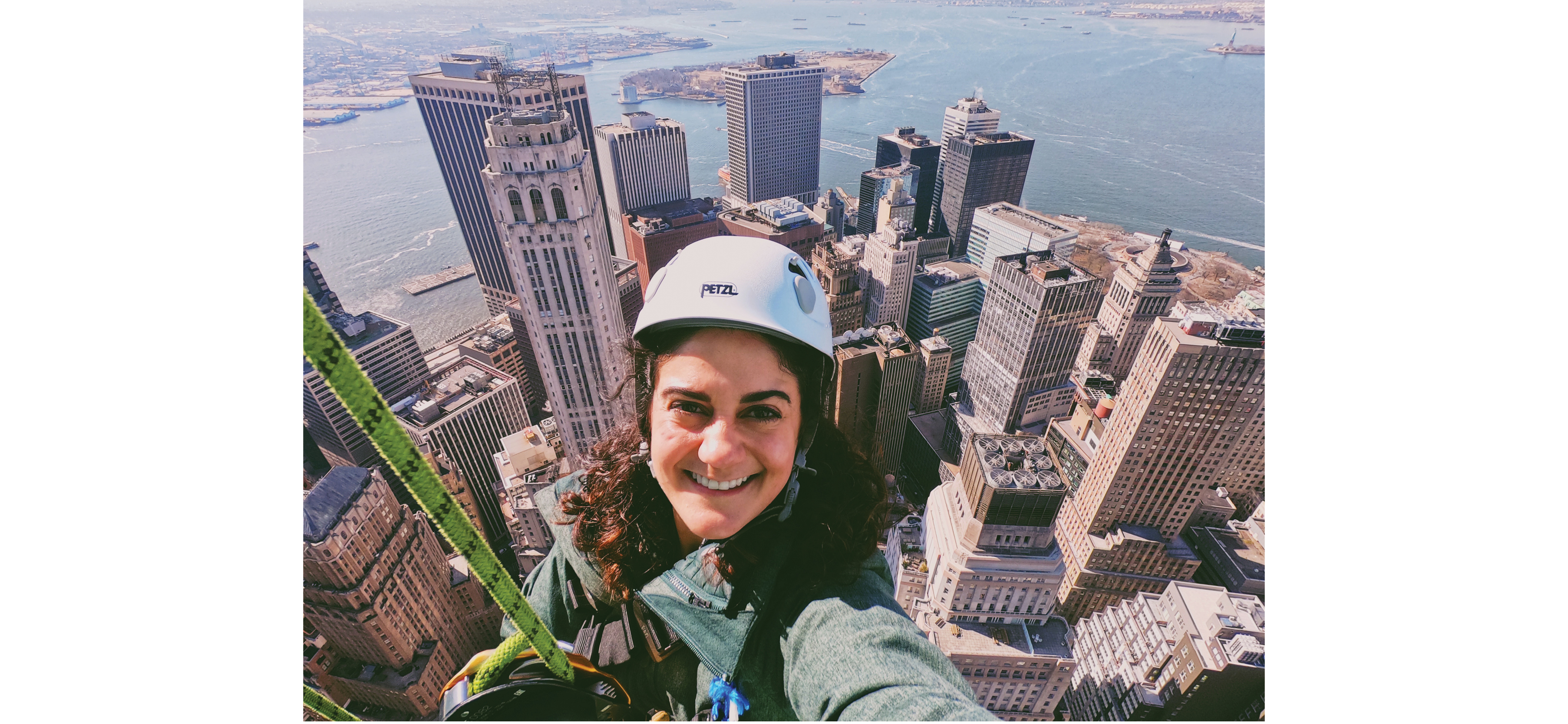Hang Time: LSU architecture grad Elyse Marks scales Manhattan’s tallest buildings
Not too many architects can say they’ve been dive-bombed by endangered falcons or offered coffee by strangers while hanging off the side of a skyscraper hundreds of feet above the busy streets of New York City.
But Elyse Marks, 33, an architect who inspects the façades of buildings via rope access, has experienced those things and more. Once, a little girl dressed as a princess for Halloween opened her window and gave Marks a piece of candy. “She was like, ‘Oh, I want a helmet like yours,’” Marks recalls. “I was like, ‘Oh, I want a crown like yours.’”
Marks, a Lafayette native who now lives in Westchester County not far from Manhattan, has inspected some of NYC’s most historic and famous buildings including the Empire State Building, the Flatiron Building, the Crown Building and the Plaza. As studio head and project manager at CANY Architecture + Engineering, she specializes in façade restoration and historic building conditions documentation, as well as architectural, structural and materials evaluation and repair.

Most people are quite interested when they see a woman hanging 100 stories off the ground outside their office or apartment window. “They’re always incredibly fascinated, especially when they see a woman, because my field of work is predominately and historically male dominated,” Marks says. “So I think that it really catches people by surprise, but then also they’re very pleased to see a woman doing what I do.”
Marks says she is intrigued by the secrets each building possesses. “When you start on a project, you never really know what you’re going to get,” she says. “I like the mystery of it. I also kind of enjoy how it’s like a puzzle, like something that you have to solve. My job is trying to figure out what’s wrong and why it went wrong, and then find innovative ways to fix it.”
Her niche is turn-of-the-century masonry skyscrapers designed between 1880 and 1940, of which there are plenty dotting the New York City skyline. Marks loves the uniqueness of each of these types of buildings. “At that time, they were just exploring the use of steel in construction, and that was their way of making these buildings higher and higher and higher,” she says. “But what I really love about that time period is that, because they were still experimenting with the technology of using steel as an interior structural frame, every building is a little different.”

The plethora of old NYC buildings from this time period are good for Marks’ job security. She wants to save old buildings—not design new ones.
Growing up in south Louisiana, Marks says she has always had a passion for history. Her grandmother was an antiques dealer in Memphis, and Marks enjoyed spending time with her visiting estate sales and antique malls.
Marks graduated from LSU in 2010 with a bachelor’s degree in architecture and then completed a two-year historic preservation program at Columbia University to earn her master’s degree. Becoming certified to inspect buildings from the outside came as a natural progression of her work, she says. She first gained her suspended scaffolding certification, allowing her to work from a platform outside buildings. Then, when a female architect friend showed her a picture of herself climbing over the side of a building for an inspection, Marks says she knew she wanted to earn her Society of Professional Rope Access Technicians, or SPRAT, certification. “I’ve always been pretty adventurous, so I just thought, ‘What an incredible way to capitalize on what we do and see the city in a completely new and different way,’” she says.
Marks trained for the SPRAT certification in a warehouse only 15 to 20 feet off the ground. But the first building she climbed over the edge of was 25 stories tall. “I was terrified,” she recalls. “And, yeah, the adrenaline rush when you go over the wall for the first time is definitely a great feeling.” Her next building was 57 stories high, and the highest building Marks has worked on is the Empire State Building at 103 stories.
While architecture is an industry still mostly populated by men, Marks says there are about 10 women in her office who are SPRAT-certified. “I feel like women are the bravest about that kind of thing,” Marks notes. “My friends that I work with will just hop out on rope without a second thought. Women are very graceful and acrobatic. It makes it easier, I think, for us to do it. Women were made for this.”
Marks herself has been off the ropes for the last six months, however, because she is pregnant. Although she says her mom would prefer she hang up her rope and helmet for good, she plans on scaling buildings again as soon as she’s able. “I think it’s a part of me,” she says, “and I don’t really see myself walking away from it.”












